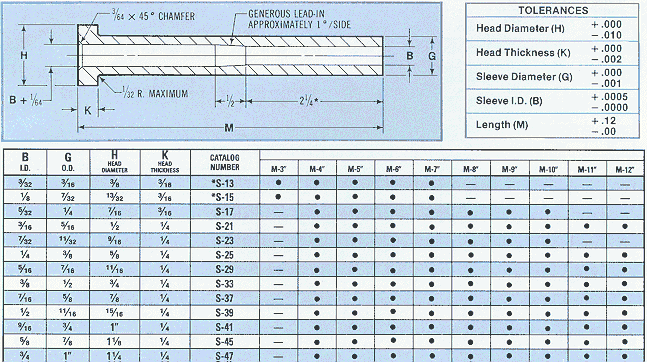

BOSSES
Bosses are cylindrical protrusions that are mounted to the nominal wall of the plastic part. Bosses usually serve as mounting or fastening points. When used as fastening points, self tapping screws or threaded metal inserts are inserted into the boss as an assembly or secondary operation. There are two primary moldability factors to consider when designing bosses.
1. Avoiding sink
2. Ejection feasibility
Roughly 90% of the bosses that have come to me over the years have required redesign. The poor part designer has been slaving over hoop strength, shear and insert fit calculations and thinks that the perfect boss has been designed, only to find that it can not be molded.
AVOIDING SINK
The image on the left demonstrates the ideal proportions for avoiding sink from a boss. The image on the right demonstrates how to get sink marks on your part.
Note that the the boss wall is 66% of the nominal wall thickness. The core pin up the center penetrates 50-66% of the way through the nominal wall. |
Note the circular sink marks created by the failure to properly core out the boss. |
EJECTING BOSSES FROM THE MOLD
The ejection of bosses is accomplished with sleeves. The image below shows the basic function of sleeves.
The boss is pushed out with a tubular ejector pin called a "sleeve". The sleeve is actuated by the ejector plates along with the rest of the ejector pins. The center of the boss is cored out by a fixed ejector pin that passes through the sleeve and anchors into the ejector box.
The Moldability issue enters with the availability of standard sleeve sizes. The availability of standard sleeve sizes limits the sizes of bosses that can be designed. Yes, custom sleeve sizes can be ordered to make the boss to any dimension you please. The problem is that if your custom sleeve ever breaks your mold will be dead on the shelf for up to two weeks while a new custom sleeve is made. Your average mold shop can not just drop everything and go make a sleeve. Very specialized equipment is required to create sleeves and custom ones must be ordered from one of a handful of companies. The cost of custom sleeves is significant.
The chart below shows the standard sleeve sizes available from DME. The exact same sizes are available from all standard parts manufacturers, Hasco, National, Progressive, etc.
|
 |
This DME chart is the key to good boss design. Dimension "B" is the I.D. and "G" is the O.D.
The rule is:
|
The
boss I.D. must be The
boss O.D. must be |
| Example: If the boss is to be pushed out with an S-17 sleeve; |
The boss I.D. must be The boss O.D. must be |
The big problem with all this is that metal insert manufacturers such as Dodge and Precision Fasteners ignore the above facts and their "Fastening Solutions for Plastics" manuals lead designers to design bosses that can't be made or that will cause sink.
Tip: If you must require custom sleeves get your toolmaker to order several extras, and keep track of them over the life span of the tool.
![]()